- Home
-
Urbanism
Urbanism
Visaginas is the youngest city in Lithuania, dating back to the mid-seventies. The central Soviet government ordered the design of a national, republican city next to the planned Ignalina nuclear power plant.
Here, the typical Soviet Union architecture created an atypical urban mosaic. Buildings typical of different cities blended into the Visaginas lake, creating a unique cityscape. Meanwhile, Visaginas' public spaces, connected by mannered arcades, have developed an innovative urban pattern ahead of time. Visaginas is a capsule of the recent past, into which, as it is slowly opened, change begins to flow.
Visaginas is perhaps the most compact city in Lithuania, deliberately devoid of its own houses, because it is embedded in a forest area by Lake Visaginas. It is a city full of buildings of exceptional architecture.
.
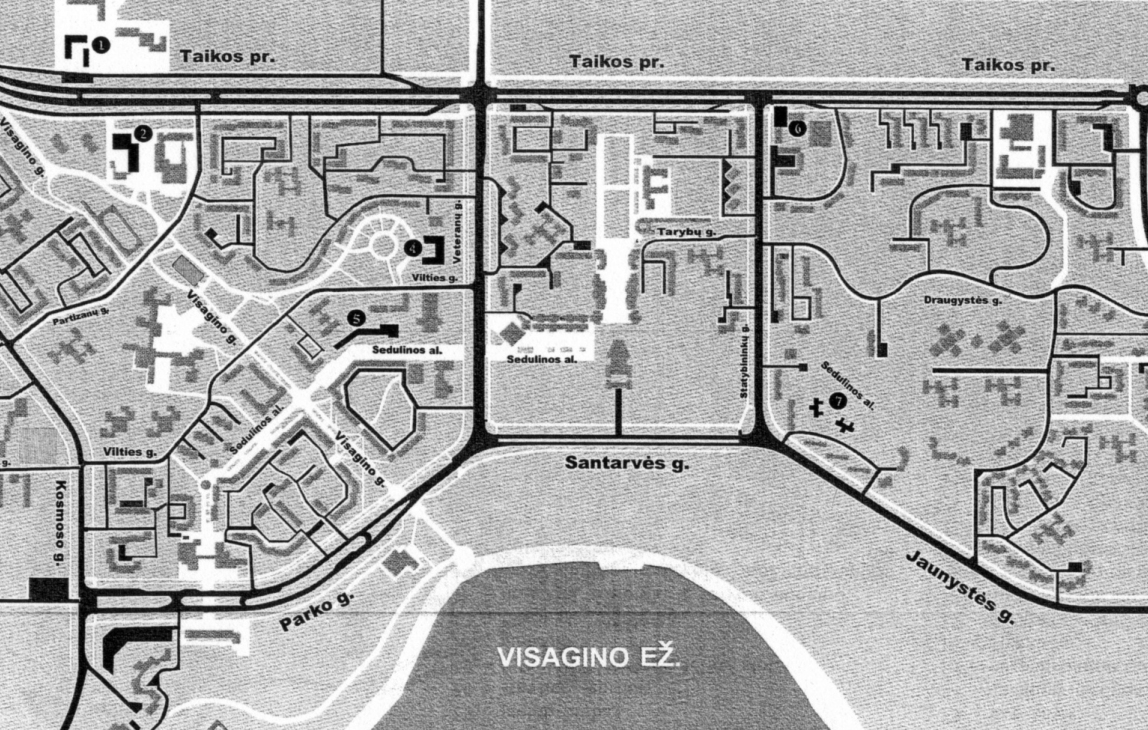
Butterfly Town is...
The city plan is based on a "bow-tie" shape, consisting of a main "body" and four surrounding "wings" - residential districts (a fourth was not built when the construction of the plant's third unit was suspended).
Visaginas has two intersecting pedestrian avenues designed as the main arteries of the city, one with shops, cafés, a cinema and a hotel, and the other, for relaxation and strolling, leading to the beach.
The city was designed according to the so-called "8 minute principle", which meant that the city centre could be reached in 8-10 minutes from any loc
As soon as you enter the city, you feel like you're in a city of concrete blocks, smelling of pine trees.
When you get off the train and walk along the forest path for just a few minutes, you arrive at Kosmoso Street, the first residential area. Here, one can clearly see the urban specificity of Visaginas. The suburb is full of apartment blocks and the branches of green trees can be seen through the window of almost every Visaginian living on Kosmos Street.
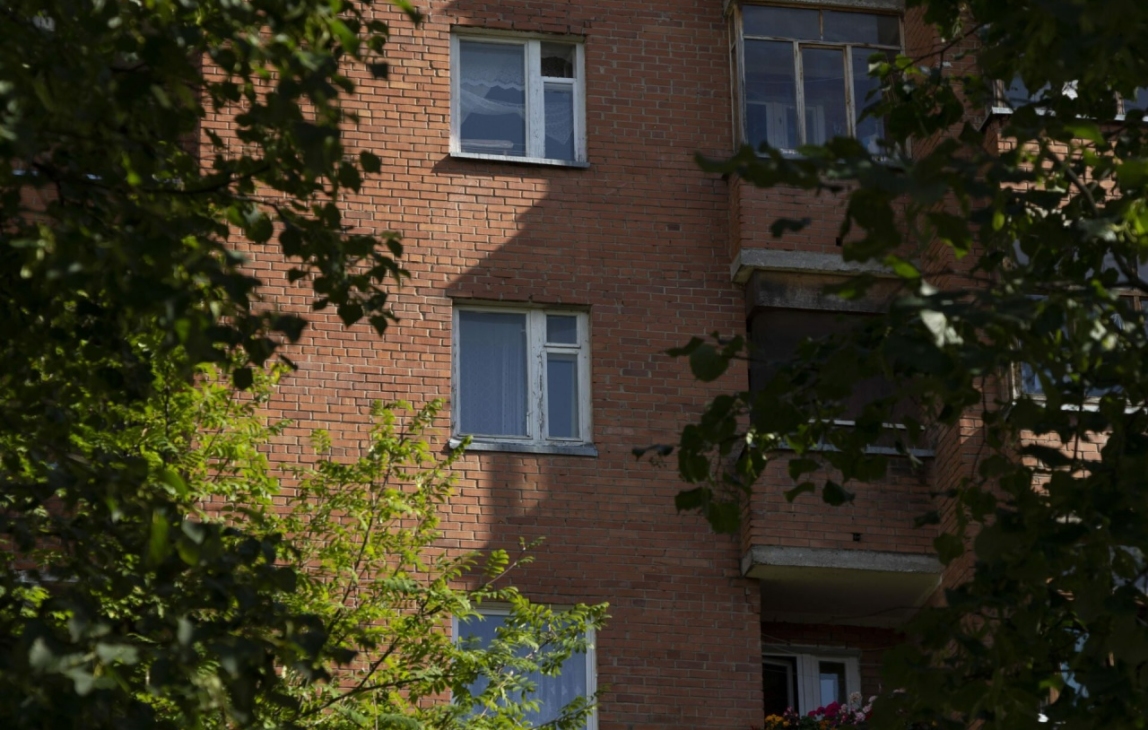
Visaginas "Old Town"
As soon as you enter the city, you feel like you're in a city of concrete blocks, smelling of pine trees.
When you get off the train and walk along the forest path for just a few minutes, you arrive at Kosmoso Street, the first residential area. Here, one can clearly see the urban specificity of Visaginas. The suburb is full of apartment blocks and the branches of green trees can be seen through the window of almost every Visaginian living on Kosmos Street.
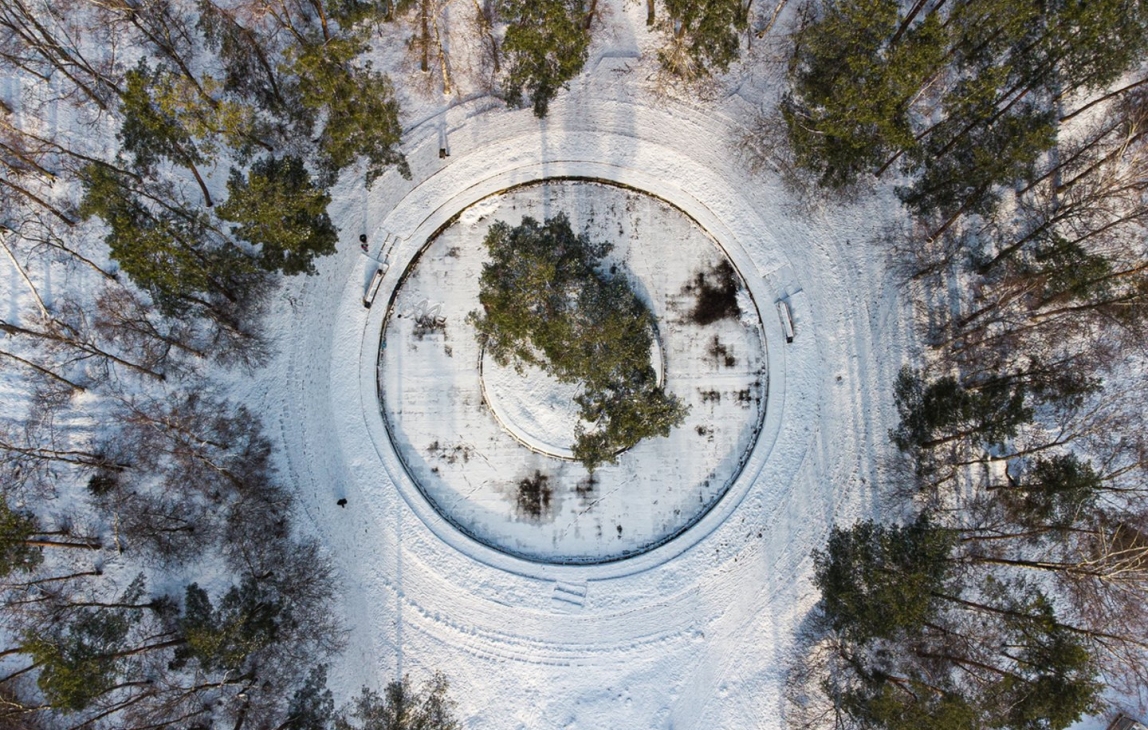
A new point of view: where does Visaginas' subtle architectural style lie?
The architectural style of Visaginas is striking in its combination of typical and non-standard solutions, creating an image of a collage-like but coherent city. It is in the details that the subtle architectural play of Visaginas lies: in patterns, structures, materials, geometric forms. The urban dynamics of Visaginas are hidden, so it is interesting to pay attention and notice the peculiarity of the details when walking around the city.
Skaitykite daugiau: https://www.lrytas.lt/bustas/architektura/2021/04/17/news/jauniausia-lietuvos-miesta-kureju-duetas-pristate-dar-neregetu-kampu-kelios-minutes-vaizdu-atima-zada-18871745
Skaitykite daugiau: https://www.lrytas.lt/bustas/architektura/2021/04/17/news/jauniausia-lietuvos-miesta-kureju-duetas-pristate-dar-neregetu-kampu-kelios-minutes-vaizdu-atima-zada-18871745
Skaitykite daugiau: https://www.lrytas.lt/bustas/architektura/2021/04/17/news/jauniausia-lietuvos-miesta-kureju-duetas-pristate-dar-neregetu-kampu-kelios-minutes-vaizdu-atima-zada-18871745
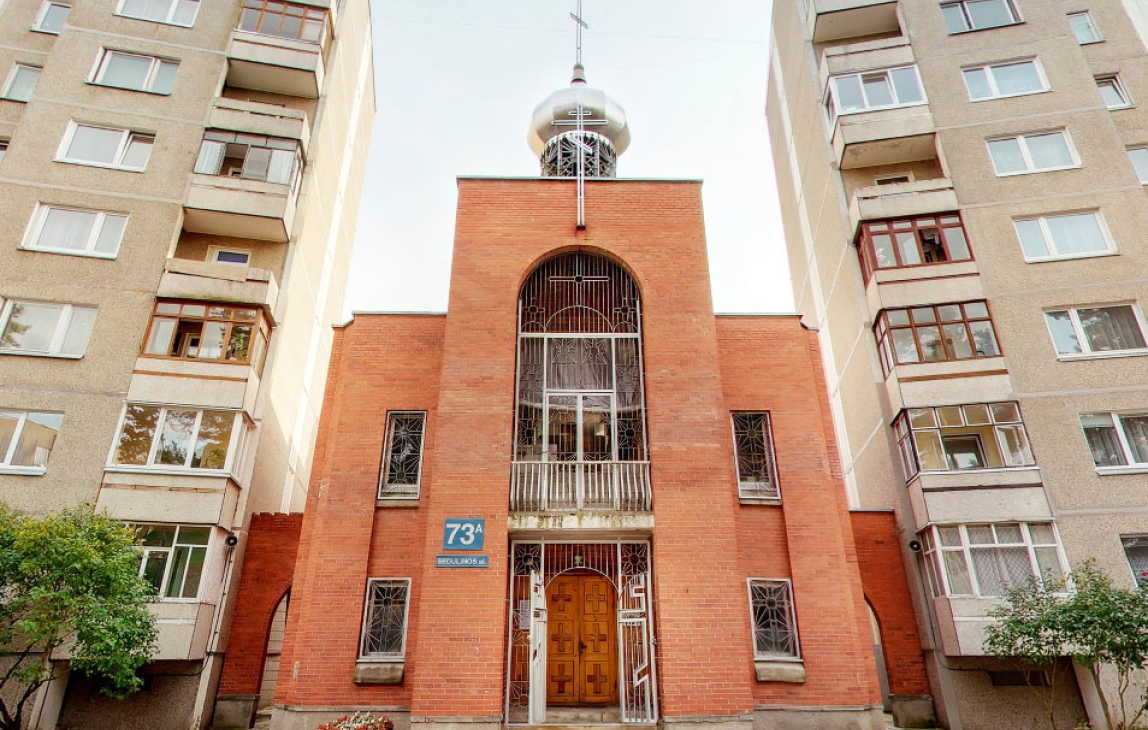
Atypical object No 1: an orthodox church inserted into a block of flats
The Church of the Nativity of John the Baptist in Visaginas is a work of modern architecture. It is a two-storey brick building, completed in 1992. The parish was registered in 1990. The first services were held in apartments. In 1991, services were held in a brick house handed over by Ignalina NPP, which was consecrated as a temple in 1992. The location of the church is particularly convenient for the parishioners, as it is situated in a block of apartment blocks.
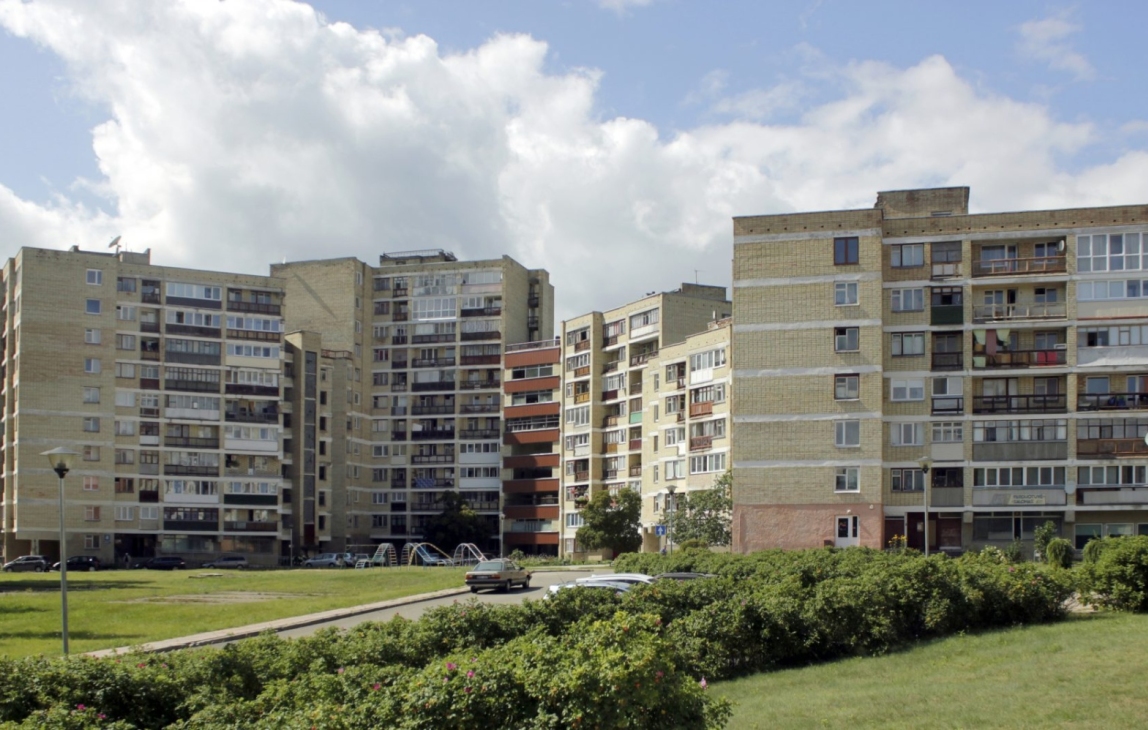
Atypical Object 2: Hotel or apartment block?
The first micro-lot contains a single hotel-type apartment block. The building consists of 6 sections ranging in height from 6 to 12 storeys. The sections had apartments with loggias. The interstices between the sections were used for various purposes: sports clubs, shops. The builders also left artistic traces by making the name of their hometown out of coloured glass blocks.
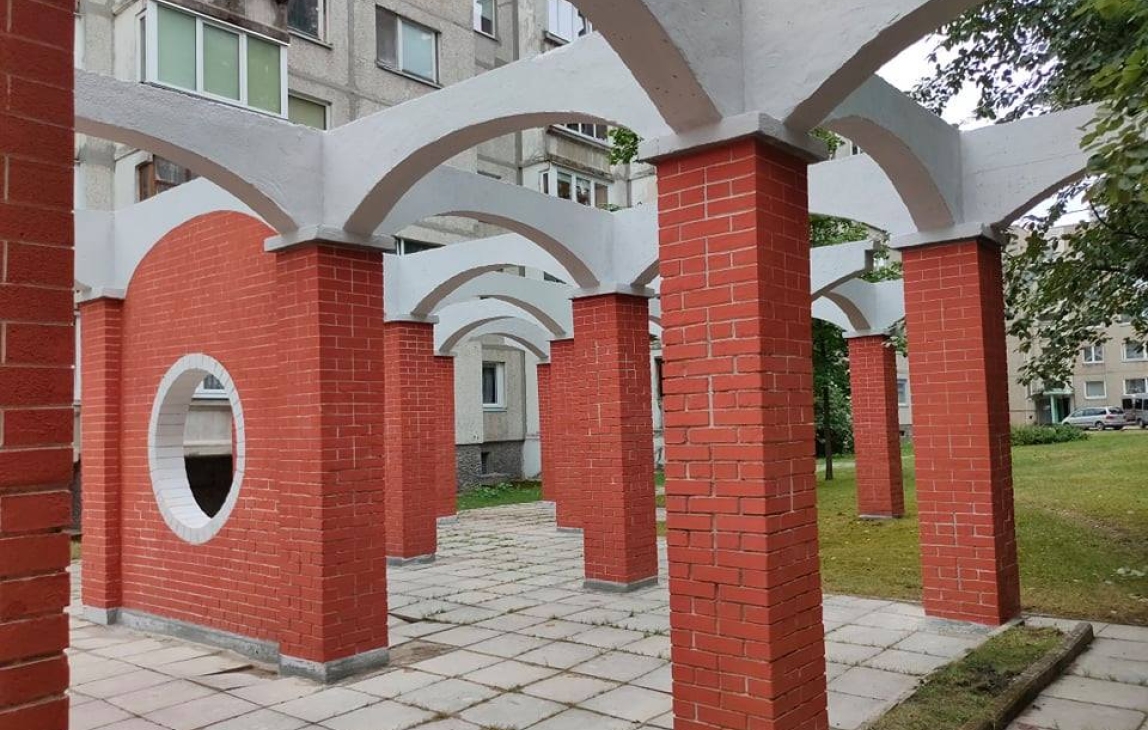
Another unique object in Visaginas is the complex of arches located between Veteranų Street 10 and Tarybų Street 7.